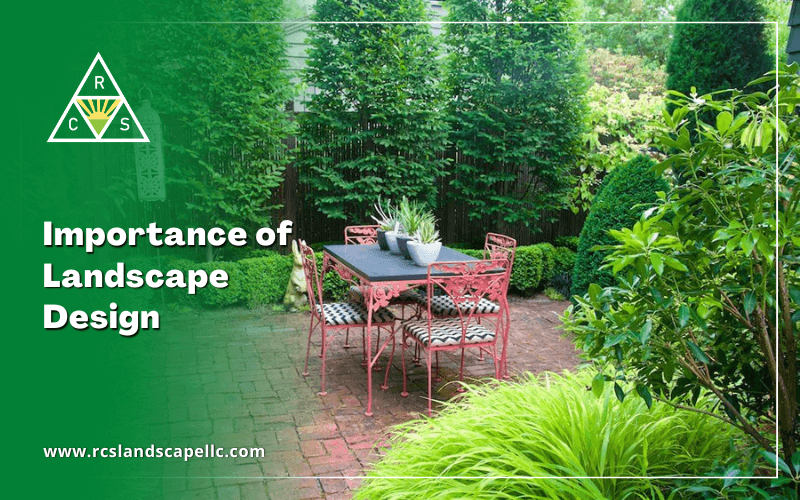The Definitive Guide to Landscape Design
Wiki Article
Unknown Facts About Landscape Design
Table of ContentsSome Known Details About Landscape Design The Definitive Guide to Landscape DesignThe 3-Minute Rule for Landscape DesignThe Definitive Guide for Landscape Design7 Easy Facts About Landscape Design Shown
Official design theme. Credit Scores: Gail Hansen, UF/IFAS The backyard is an expansion of the home where a selection of tasks occur. A lawn can typically be separated right into three locations: public (the front yard), private (the back lawn), and solution (usually the side backyard). The area of activity locations depends largely on the type of area, the dimension of space needed, the kind of activity, and the wanted proximity to various other activities and structures.The outside wall of your house commonly acts as the very first wall or starting factor of an exterior area. Incompatible uses need to be separated, and relevant tasks, such as cooking and eating, should be placed together to make the lawn extra reliable and enjoyable. When utilizing hardscape to produce rooms, make use of building product similar to that utilized in your house for continuity from your house right into the garden.
Linked spaces. Credit Rating: Gail Hansen, UF/IFAS Using comparable hardscape features and duplicating plants pulls the eye around the garden. Essential factors in the process can be highlighted with plantings or features that draw interest and urge motion in a particular instructions. Moving along the course takes a person from one location to the next and enables the user to have a selection of experiences.
Landscape Design Can Be Fun For Everyone

For emotional convenience plants are made use of as physical or suggested obstacles for personal privacy and safety. Physical obstacles block both the view and access to a space and consist of fences, walls and plant bushes.
Physical and implied barriers. Debt: Gail Hansen, UF/IFAS For these reasons, the kinds of plants to be made use of (such as trees, hedges, or groundcovers) should be picked in the very early stages of preparation (Landscape Design). Plant kinds are selected for their functional abilities so that their future function and needed space can be thought about at the same time

The Best Strategy To Use For Landscape Design
Each plant mass remains in front of, behind, or following to, another mass. Number 11. Straight plant layers. Credit Rating: Gail Hansen, UF/IFAS Figure 12. Upright plant layers. Landscape Design. Credit Score: Gail Hansen, UF/IFAS Repeating plants within a mass and duplicating masses with similar plants links the garden with each other. The individual plant features have to be considered to efficiently layer and mass plants.All plant compositions start with the main framework plants, the big, primarily evergreen background plants-such as the trees and huge shrubs. These plants separate or enframe spaces, manage the dimension of the area, and offer the beginning factor for selecting the appropriate qualities of the second layer, midground plants, for massing and infill.
Vital points in the garden must be highlighted by the use distinct plants, distinctive structures, or garden ornaments. Marking thresholds or entryways to spaces can be done with gateways, arbors, and steps, or with making use of one-of-a-kind and colorful plants. The type and/or design motif of the yard will usually assist figure out the crucial factors and how they must be highlighted.
Various other essential areas in the lawn are focal points, which is utilized to aesthetically organize a designed location. Different perspectives or point of views can reveal various compositions in the landscape that might require a range of focal factors.
The Landscape Design Statements

Figure 13. Plant kinds. Debt: Gail Hansen, UF/IFAS After kind, texture is the following dominant feature of a plant; crude, tool and great textures can be made use of for comparison and emphasis in the landscape. Form and structure both trump color in the yard for the majority of the year. During specific periods, shade will certainly be the most visible attribute of the garden.
The enjoyable aroma of plants, the audio of wind in the trees, the noise and structure of water, and the shades and structures of sculptures, pots and yard furnishings hop over to here all contribute to the experience of the garden. One information that is commonly forgotten is the effect of light on the visual appeals of the plants.

Landscape Design - Truths
It is crucial to understand the ultimate mature dimension of plants so they can be put in the right place and spaced correctly when they are set up. Giving plants room to grow is a difficulty because the usual fully grown dimension is generally based upon ideal growing conditions and the ecological problems of a website might cause a plant to expand larger or remain smaller sized.
Report this wiki page